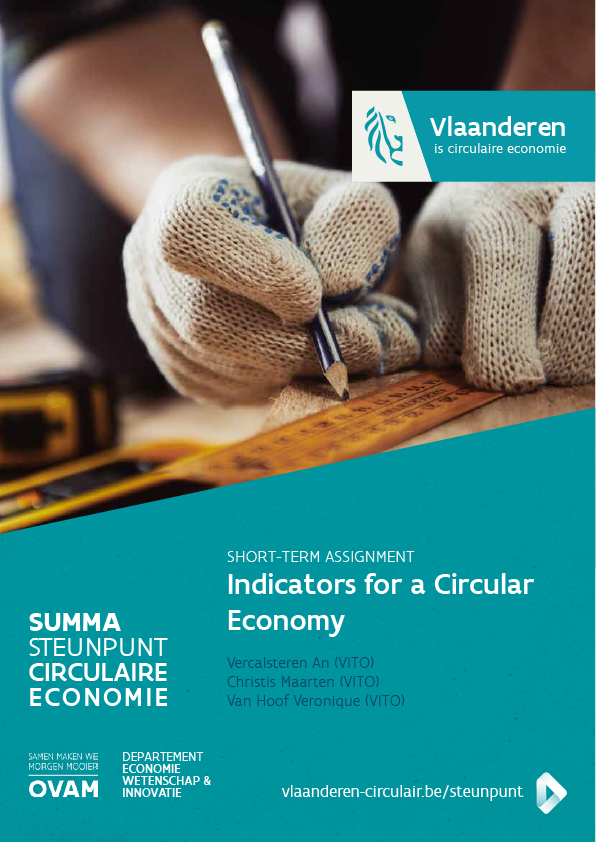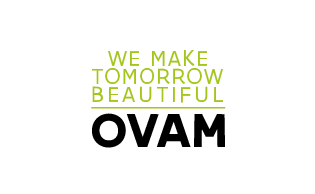1. Indicators for a Circular Economy
Indicators for a Circular Economy
Vercalsteren An (VITO), Christis Maarten (VITO), Van Hoof Veronique (VITO)
Juni 2018
Material related indicators are central in this study, however we want to stress the fact that a clear link to other indicators related to climate, water, etc. needs to be taken into account when monitoring the transition to a circular economy.
This short term assignment aims to make an inventory of indicators that are relevant to monitor the transition to a circular economy and to measure effects of new policy and trends. The inventory of indicators is based on scoreboards and monitoring frameworks developed by the EU and reports by JRC and EEA. This list is supplemented with indicators known by the authors and a literature search. This is a first step towards the development of a circular economy index which is one of the objectives of SUMMA.
The scope of indicators varies largely, e.g. material flow indicators can focus on global figures, but also on a specific substance content in a component. In this study we distinct between macro, meso and micro level indicators. An extensive list of indicators discussed in literature and related to the circular economy is developed, of which a selection is discussed more in detail in fact sheets. The fact sheets report different aspects of the indicator: definition and scope, data availability, level of detail, future developments, links to circular economy and the availability of a benchmark (policy targets, …).
Indicators related to the circular economy can be classified according to different criteria. To have a visual overview of some important characteristics of the indicators assessed in this study, they are classified on 3 axes that represent different criteria:
Micro, meso, macro level
CE strategies
Technology versus socio institutional
The study shows that lack of data (from macro to micro) and time and effort constraints (from micro to macro) are key barriers to link indicators on a macro/meso level on the one hand with indicators on a micro level on the other hand.
Another observation is that existing indicators focus primarily on physical parameters, like kilograms, that are more technology-related. Indicators focussing on socio-institutional aspects (e.g. collection systems) are less well-defined and less frequently included in monitoring frameworks. The same applies for high-level circularity strategies. Very few indicators capture the effect of strategies that relate to smarter product use & manufacture and extending the life span of products.
A transition to a circular economy may not be looked at from a material perspective only, but should include also other environmental impacts such as climate change. Indicators monitoring environmental impacts exist already and can easily be combined and integrated in a set of indicators for monitoring the circular economy.
With respect to future monitoring of developments of circularity indicators, several initiatives are ongoing on a European level to define a set of indicators that are useful for monitoring the circular economy, based on existing indicators. In parallel, researchers are working on the definition and methodology development of additional indicators that focus on specific


.png)






